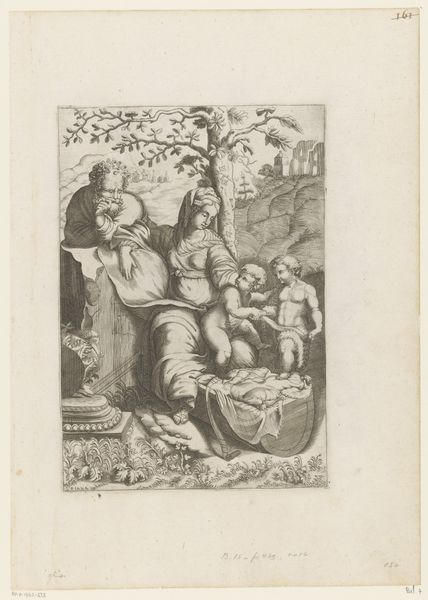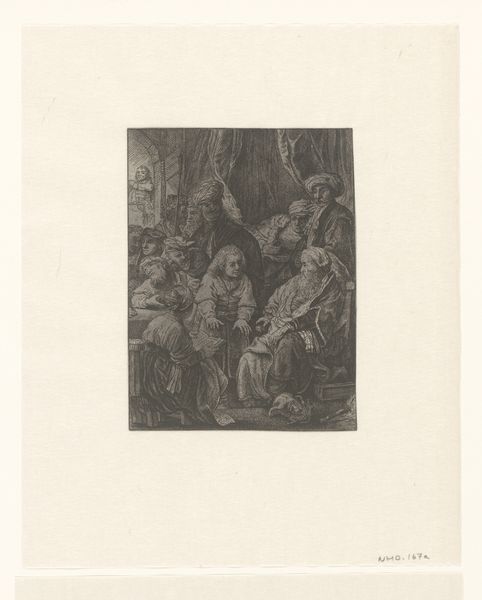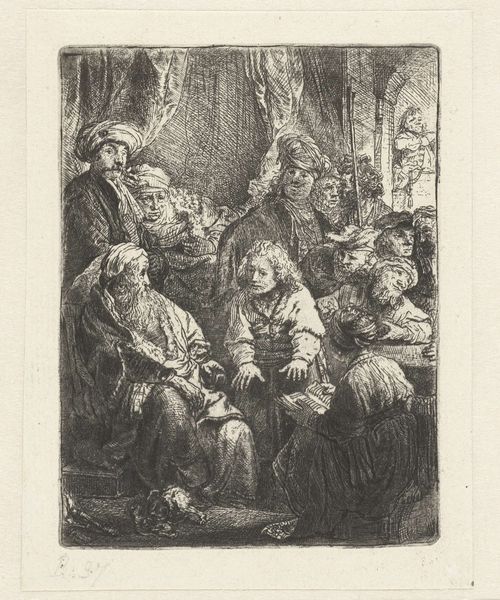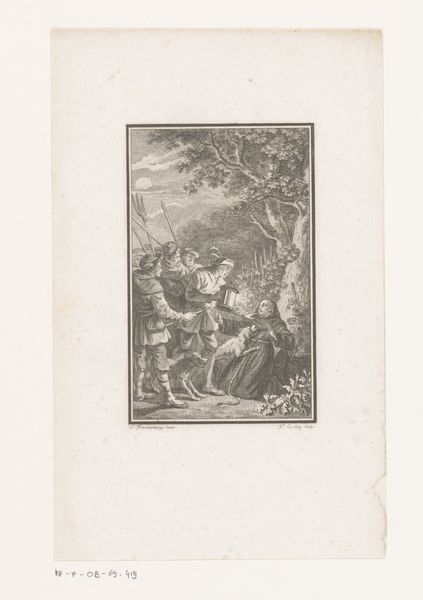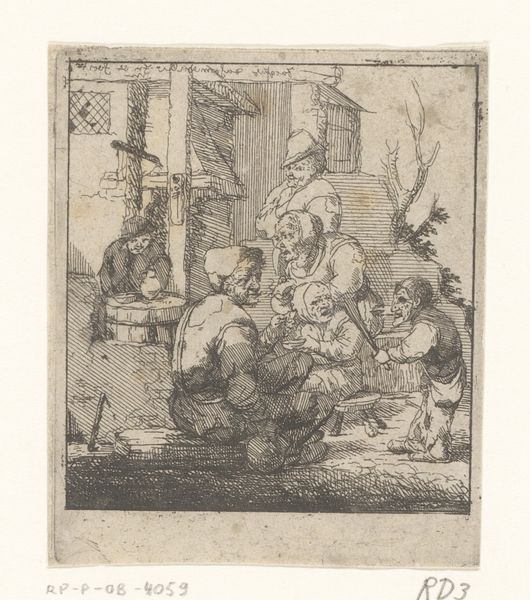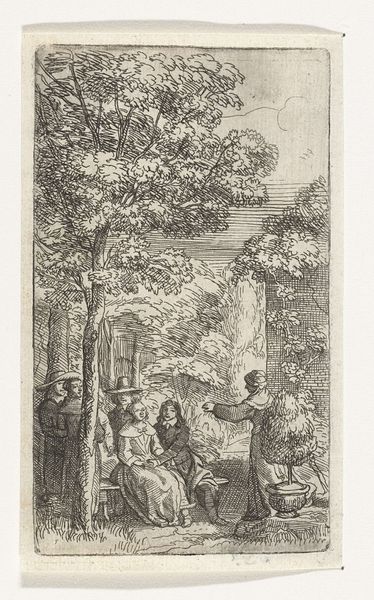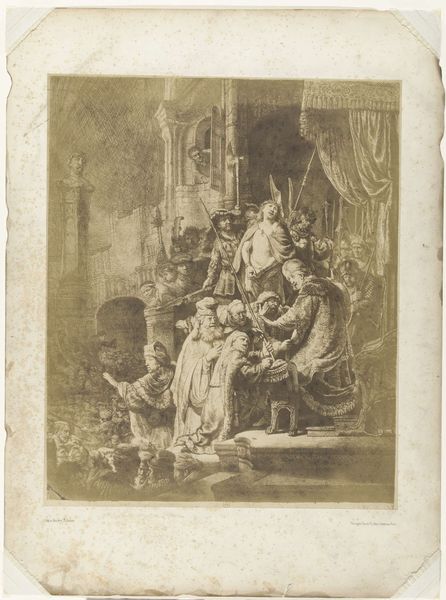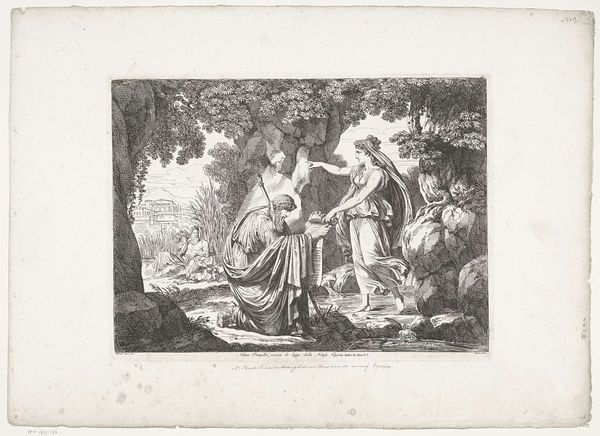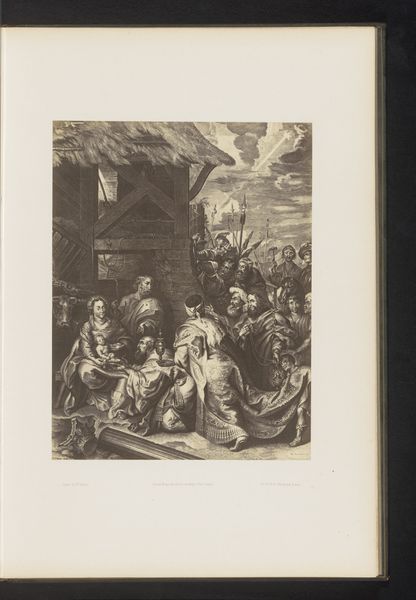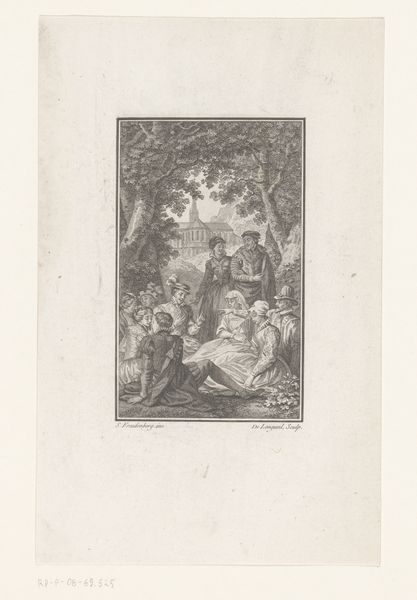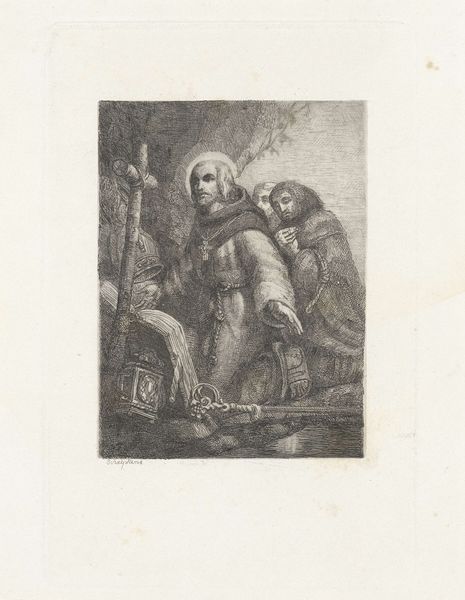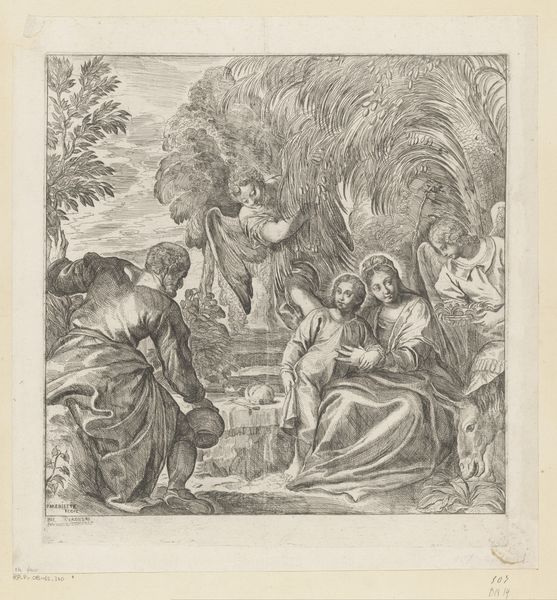
print, etching
narrative-art
baroque
dutch-golden-age
etching
figuration
history-painting
Dimensions: height 110 mm, width 83 mm
Copyright: Rijks Museum: Open Domain
Curator: This etching by Rembrandt van Rijn, titled "Jozef vertelt zijn dromen," which translates to "Joseph Telling His Dreams," likely created around 1638– really draws the eye. What are your first impressions? Editor: There’s an immediate sense of intimate family drama. The claustrophobic staging, combined with the anxious expressions on everyone’s faces makes it feel like a powder keg waiting to explode, especially given Joseph’s slightly manic pose in the center. Curator: Indeed. Rembrandt has a remarkable talent for capturing a scene pregnant with impending conflict, doesn’t he? I find that the historical symbolism and allegorical implications of this image add an interesting layer. The dream as a premonition…a symbolic narrative about ambition and its inherent risks. Editor: Exactly! And let’s consider the politics. Joseph, historically interpreted as an outsider and ‘other,’ stands central. His youth and perhaps naive confidence become an issue against a background of suspicion, perhaps fueled by an existing power dynamic. How does Rembrandt position the patriarchal figure seated to the side? Curator: Ah, Jacob. I see him less as a patriarchal figure, and more as the vessel for interpreting divine will—his aged form representing ancient wisdom. He anchors the image and perhaps reflects the eternal questions regarding ambition, destiny, and spiritual significance. Editor: But doesn’t that interpretation gloss over the complexities of familial power and inheritance? The brothers behind Jacob all wear turbans and expensive fabrics, indications of privilege being threatened. Seeing them positioned this way offers commentary on colonial avarice, given Dutch interests in the spice trade at the time the work was produced. Curator: That is definitely one way to interpret the composition. I lean more toward examining the formal aspects and compositional choices within a more focused sphere of biblical art; I read Rembrandt deploying the device of a stage to create dramatic tension through arrangement of his actors and careful hatching and cross-hatching of the lines for an impressive array of grays. The chiaroscuro is a key technique Rembrandt returns to time and time again for both emotional affect and allegorical weight. Editor: But even that formal examination reflects deeper social concerns! The deep shadows are just as telling as the light, reflecting fears of those in power who could sense that something is not quite right in their domain, in this context, patriarchal rule threatened by a young visionary’s radical ideas. Curator: So much weight to unpack! These multiple interpretations simply underscore the richness and continuing power of the original narrative… and of course, Rembrandt’s deft artistic skill. Editor: Absolutely, and understanding the layers helps us see that, whether intentional or not, the politics embedded within Rembrandt’s work are an important entry point.
Comments
No comments
Be the first to comment and join the conversation on the ultimate creative platform.
